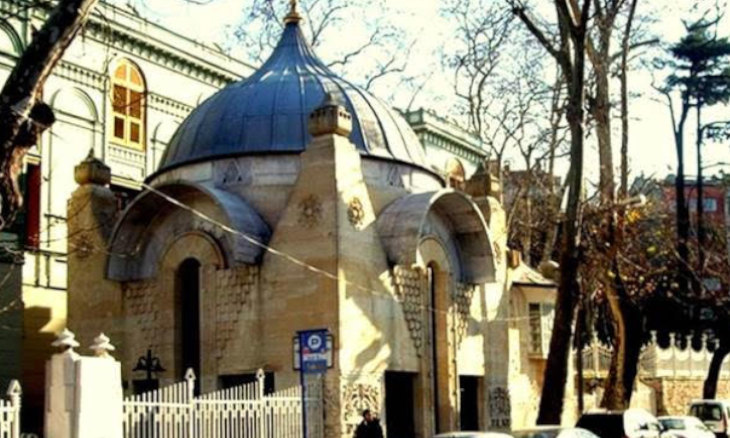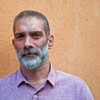Genius Loci
Vienna, no need to be a historian to reach that conclusion, is an imperial capital. Coming from Istanbul, I can’t help but think about the parallelism of these two cities being amputated of their respective empires almost simultaneously at the end of World War I.
Merriam-Webster gives the definition of the Latin term “genius loci” as “the pervading spirit of a place” or alternately, as “a tutelary deity of a place” -this for a change from your usual “zeitgeist.” Recently walking around in central Vienna, I catch myself musing about the image of an imposing head added on a quite modest body that seemed out of sync with it. Why so?
Vienna, no need to be a historian to reach that conclusion, is an imperial capital. Its current population is just shy from 1.9 million inhabitants. Still, one learns from information offered online by the city government that one can count up to 7.5 million arrivals and 16.5 million bed-nights for 2018 only. Hence, it is today safely a successful enterprise but doesn’t have an empire attached.
Yet, coming from Istanbul, I can’t help but think about the parallelism of these two cities being amputated of their respective empires almost simultaneously at the end of World War I. In Turkey, history is not about a long gone common past but is always of political currency. In Vienna, the “loci”, or the setting so to speak, consists of all those sumptuous palaces, statues of pan-handle-moustached men on horseback, oversize parliament and other governmental buildings, museums that tell us a different story.

This sure is no Euro-Disney too. Then again I am not sure either whether there is a strong political vein among the 8.8 million Austrian citizens on feeling unduly deprived of an empire. Here, even the most extreme right wing political leader would not adopt a rhetoric of recovering certain parts of a long lost empire under the guise of “correcting” Austria’s borders or having a God-given or “Habsburgian” (?) right to intervene in “Mittel Europa” or the Balkans, I presume.
Vienna today, during that mere weekend spent in town, does not come across as being particularly threatening to my dark haired, heavy eyebrowed eastern self but quite cosmopolitan on the contrary. In his wonderful Goncourt winning novel “Compass” Mathias Enard too muses through his main character who is a musicologist living in Vienna, about the making of the Orient. Enard reminds the inadvertent reader that “Österreich”, as the name suggests, used to be where the “eastern realm” began.
Enard’s book focuses on cultural cross-breedings. In his “mémoires d’orient” Ambassador Bajolet, whom I have had the privilege to know in person while in Baghdad in 2003-06, too underlines the cultural richness that comes from East-West mutual fertilization and laments about the present situation: “What kind of light can come out if this mono-colour and intimidating Orient?”

While the Habsburg rule started in Vienna in 1282, the Ottomans established themselves right next door to ailing Byzance in 1299. Once the Ottomans’ last effort to conquer Vienna failed spectacularly in 1683, the empire’s glide toward oblivion began in earnest. Today’s Istanbul population is about twice the population of Austria. Turkey’s is almost ten times Austria’s and even the number of Syrian refugees in Turkey is about twice the population of Vienna.
Arrive by boat to Beşiktaş neighbourhood on the European shores from Anatolian side’s Kadıköy and walking up the Barbaros Boulevard towards Yıldız Palace you can entertain a similar strain of thoughts about the spirit of our times, the stories that locations whisper us. Just before what today is Conrad Hotel you will see the modestly monumental “art nouveau” style tomb of Sheikh Muhammad Zafir Efendi of the Shadiliyah sufi order built by the Italian architect Raimondo d’Aronco upon orders by Sultan Abdulhamid the 2nd in 1903-04: So many layers of politics and culture in a single sentence.
Here is an excerpt on d’Aronco from Istanbul Research Institute’s related entry: “his contribution is even more important as it lays within a theme that constitutes the characteristic property of the architectural study focused in Vienna: this theme, is the re-discovery of the folk-art with its ‘genius loci’ character and its purpose is to re-invigorate the forms of expression that define the national identity within the framework of interaction of languages and cultures.” Again back to Vienna.
Whenever my opinion is sought by a visiting scholar or a journalist from the West, I kindly urge these friends to get their essentials straight first and try not to hurry in their claim to understand all in a flash. True, often times foreigners understand and know “us” better than we ourselves do in our legendary lethargy. But it also true that there is a “CENTCOM Mideast Map Cut-Out” sort of a pedestrian image for these lands.
Therefore, to see, one must look first, dare I say, and find one’s own rhythm to learn while at it. Not all about learning but some part of it still seems to me a mystic inward journey. Vienna is two-hour flight time away from Istanbul. Whereas, for the initial conquest effort in 1529, it took Sultan Suleiman “The Magnificent” 141 days to reach Vienna. Today “Sultan’s Trail” that runs for 2100km more or less parallel to the ancient “Via Comitis” (the Roman road to Jerusalem) is a trekking route. A good way to start knowing, is to be curious and to start walking perhaps?

